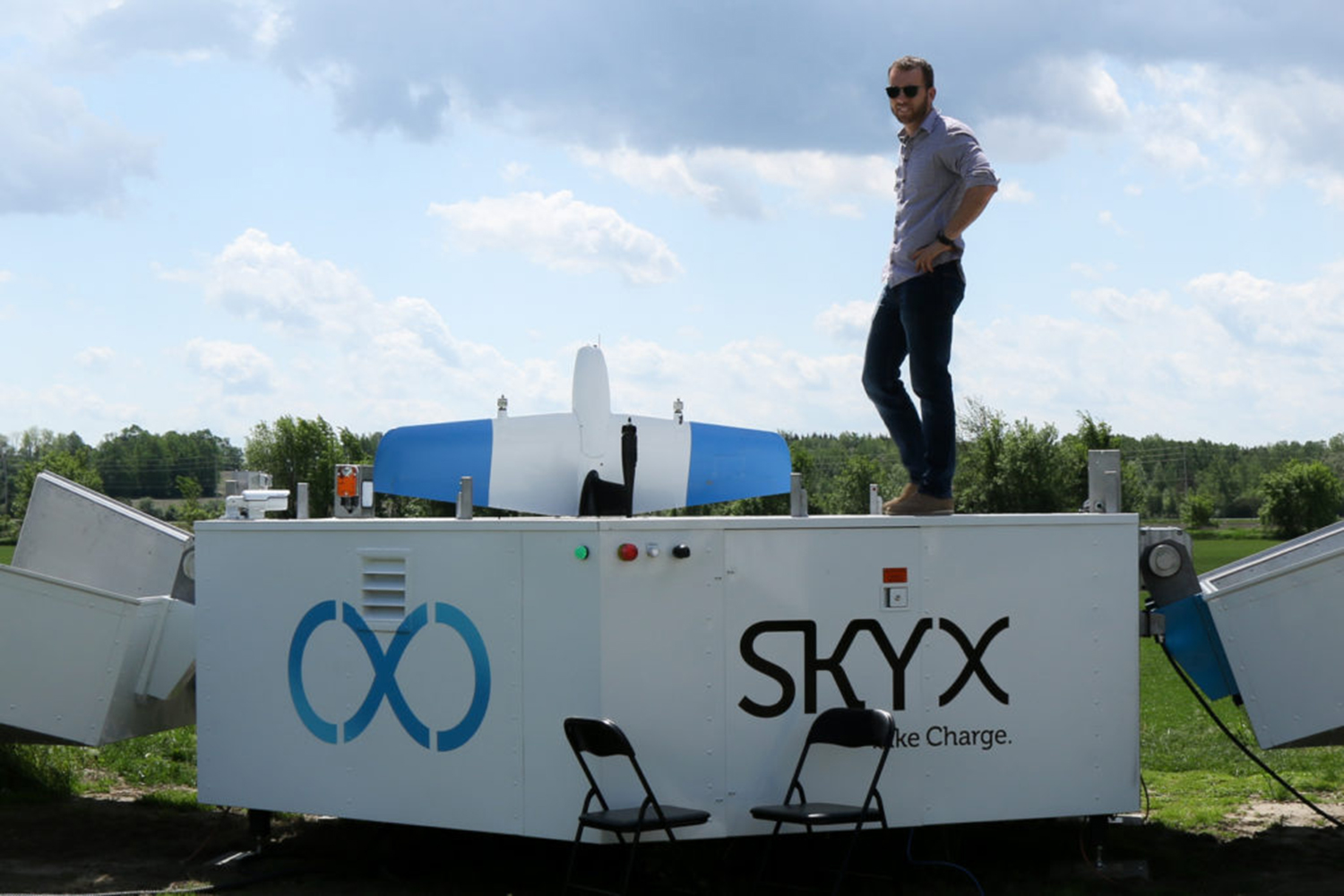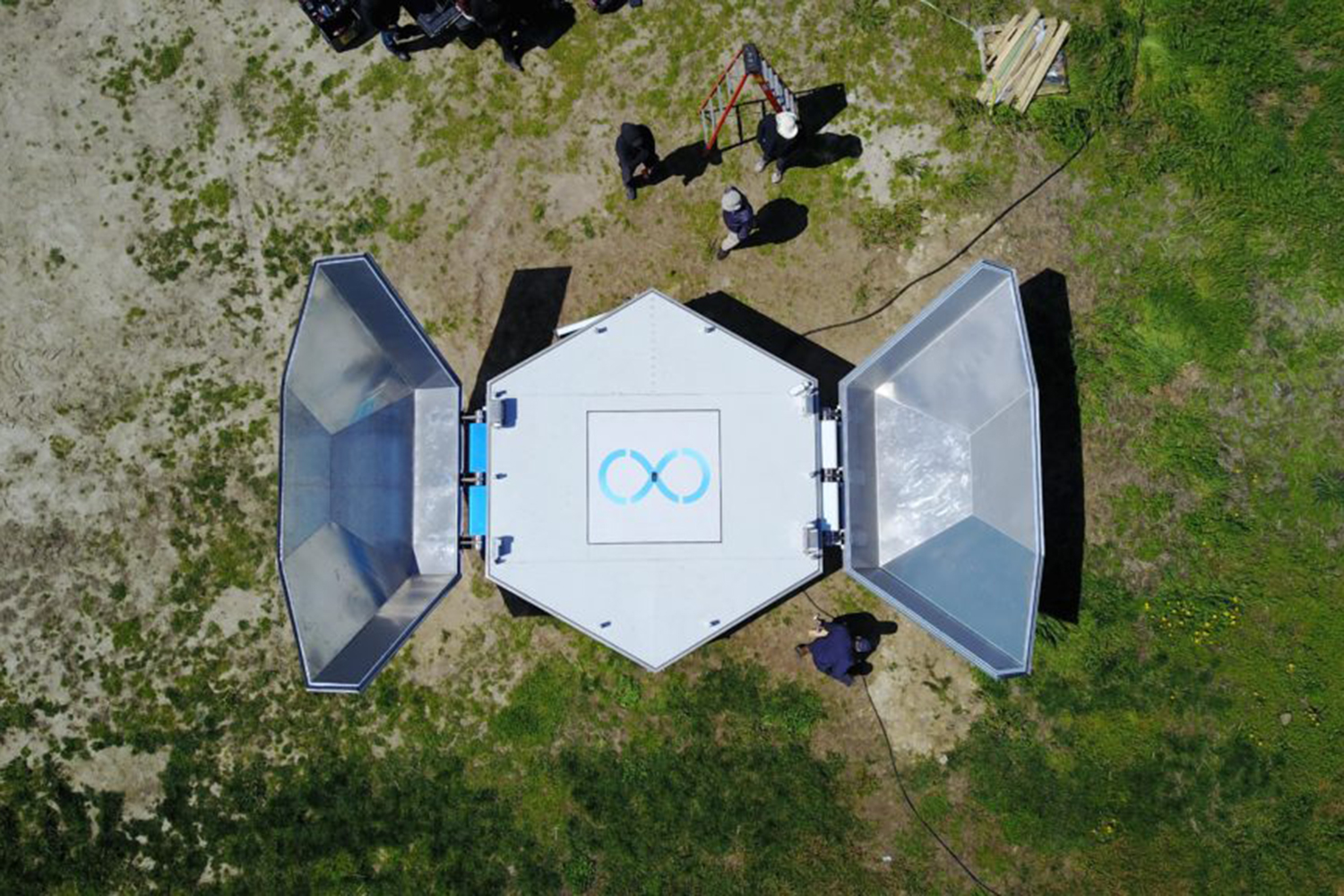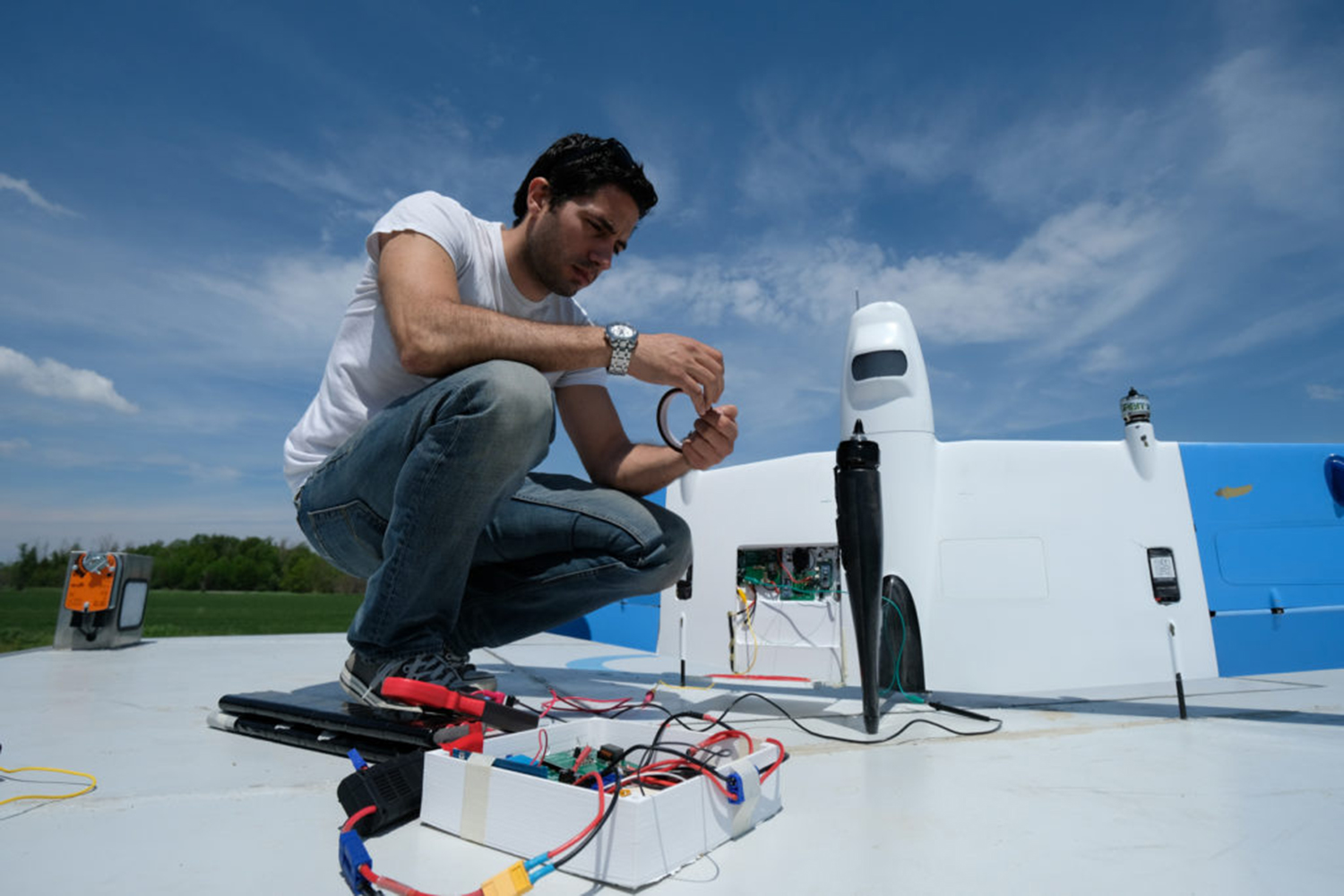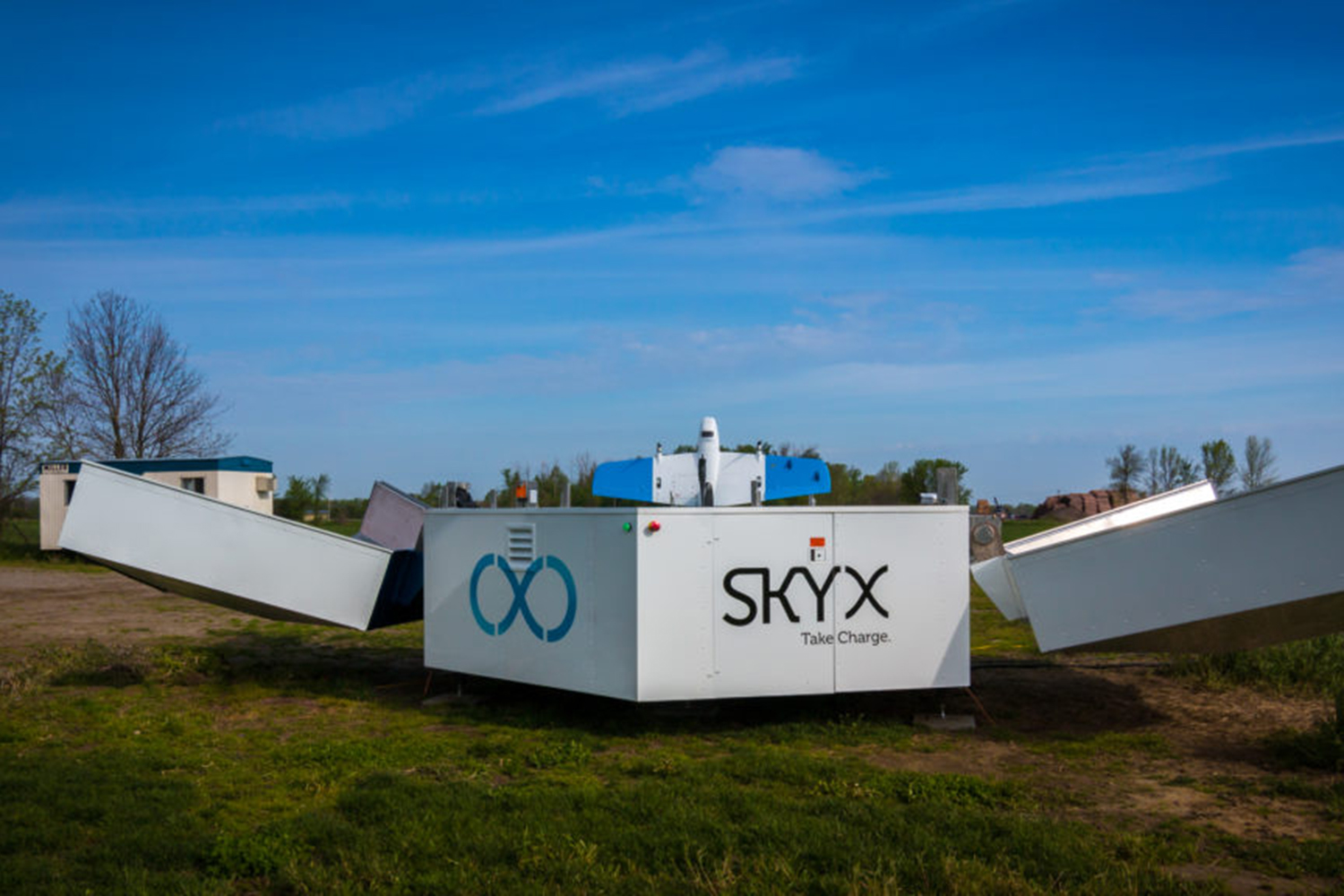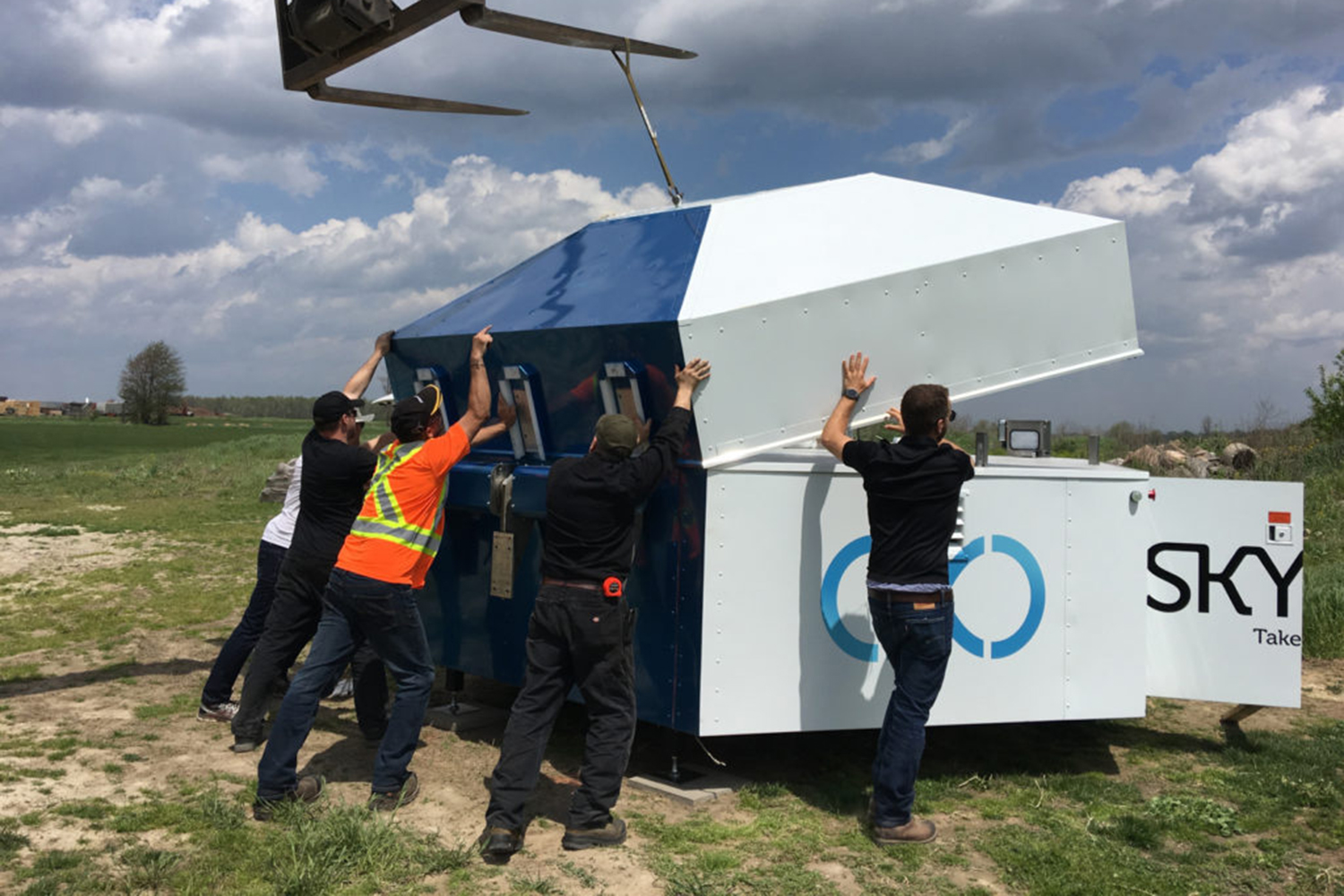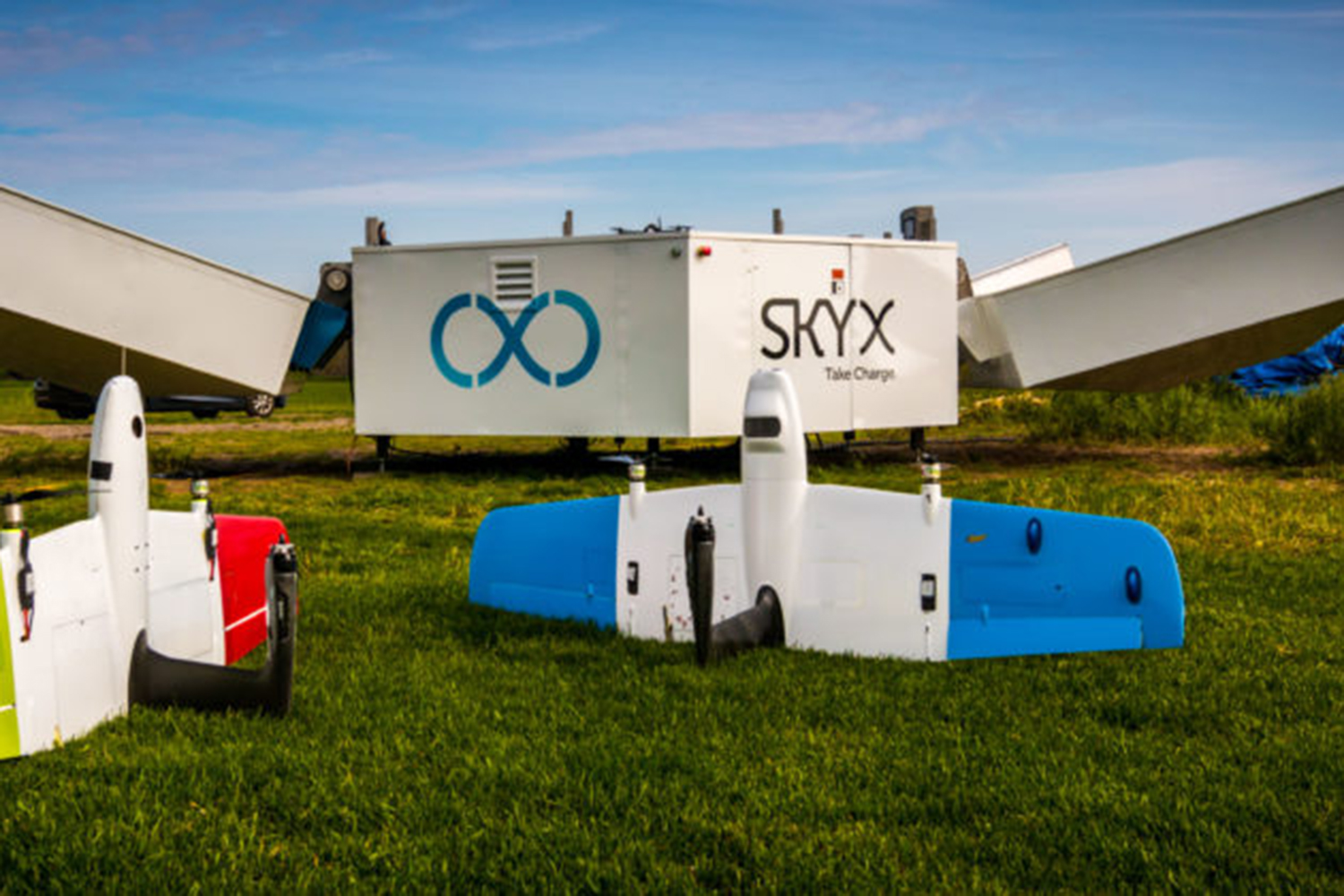The new recharging stations are intended to be used with SkyX’s SkyOne unmanned aerial vehicles (UAVs), which take off like a helicopter and fly like a plane. These autonomous VTOLs (short for vertical takeoff and landing) are used for long-range infrastructure monitoring, particularly pipelines in the oil and gas industries.
SkyOne already boasts an impressive range of 62 miles on a single charge, but that range is quickly limited if the drone has to turn around halfway and return to base to recharge.
With xStation, SkyX hopes to keep its drones in action indefinitely, hopping from intermittently placed platforms out in the field. The company has fitted its drones with a custom operating system that monitors its battery level and directs it to the nearest charging station when charging levels are low.
At the xStation, the SkyOne drone slides in for a soft landing before a canopy closes to protect it from the elements during charging. SkyX says its platforms have been built to last, with an estimated life span of 10 years in the field.
Drones are finding more and more applications beyond fun for hobbyists and better angles for photographers. Organizations like the Lindbergh Foundation have plans to deploy UAVs to help fight illegal poaching, while conservationists in Tanzania have used hobby drones to scare elephants away from problem areas. Meanwhile, farmers in Japan have tested the Yamaha RMAX as a crop duster.
After the completion of what it calls a “massive project,” SkyX says it plans to start installing xStations for clients in July.
